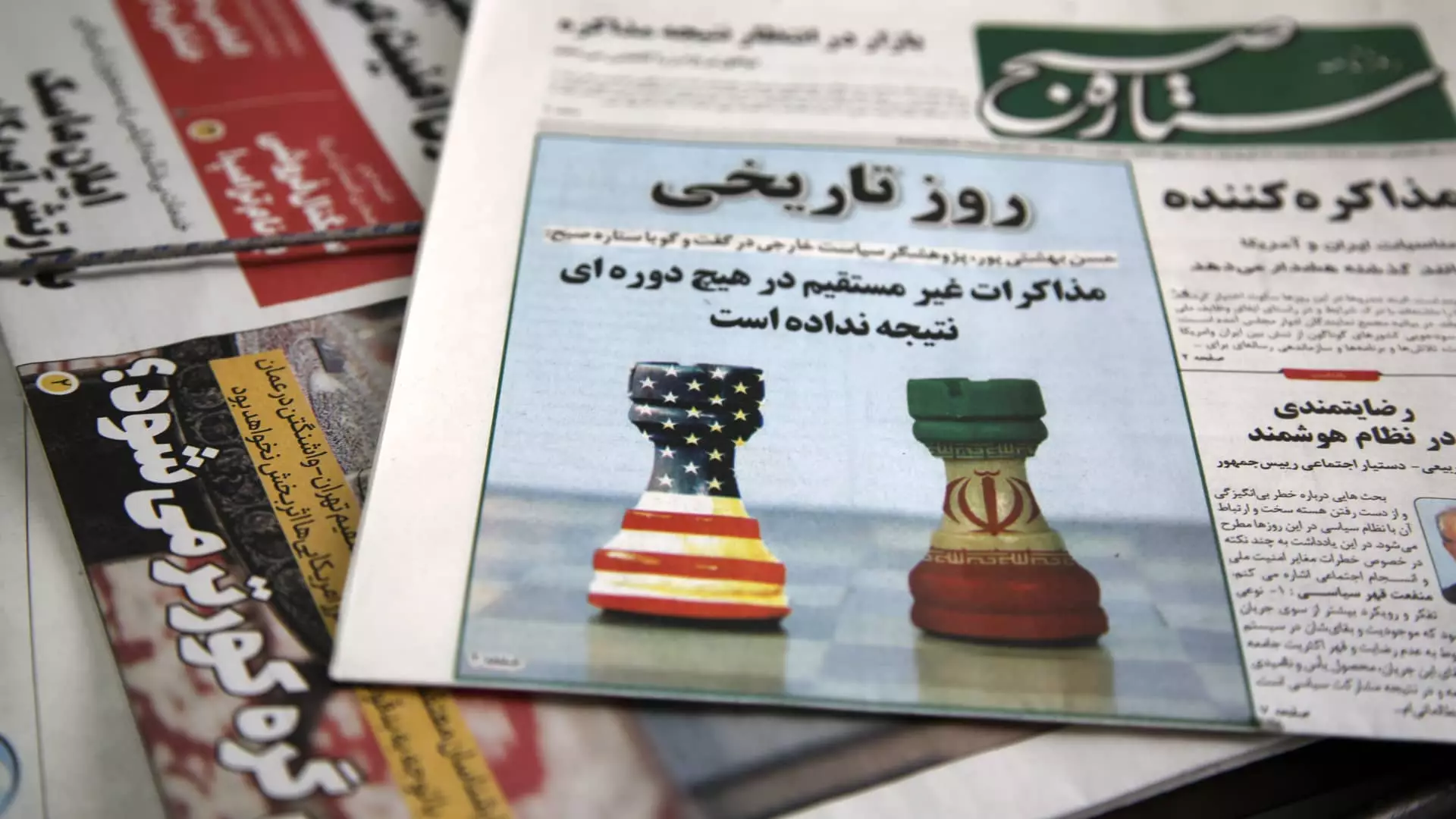The ongoing nuclear negotiations between Iran and the United States, poised to unfold in Rome, highlight a precarious balancing act between diplomatic dialogue and the looming specter of military confrontation. As both nations approach the negotiating table, the atmosphere is thick with a history of deep-rooted mistrust and failed agreements. President Donald Trump’s statement that he would resort to military measures if diplomacy falters only amplifies the stakes. In a world where the concept of mutual understanding is increasingly rare, this situation poses an existential crisis not just for Iran and the U.S., but for global stability itself.
Iran’s Foreign Minister Abbas Araqchi and Trump’s Middle East envoy Steve Witkoff are set to engage in indirect negotiations, a method reflective of how conflict-averse both sides have become. The fact that they must rely on intermediaries from Oman underscores the complexity of the situation. Mediated talks may offer some breathing room, but they also lack the transparency and accountability that direct diplomacy can provide. Thus far, both sides have attempted to paint the recent discussions as constructive, yet the specter of previous failures looms large over any hopeful declarations.
Anticipations and Reality: A Tug-of-War
Iranian officials have sought to temper expectations surrounding these talks. These efforts are not just reactionary; they reflect a calculated strategy born from the ashes of previous negotiations that yielded little more than broken promises. Supreme Leader Ayatollah Ali Khamenei has publicly articulated a stance of cautious optimism, stating he is “neither overly optimistic nor pessimistic.” This position reveals a profound understanding that the road ahead is fraught with pitfalls. For Iran, any negotiation hinges on the lifting of sanctions—it is a matter of economic survival and national pride.
Trump’s contradictory statements only add layers of complexity to the situation. While he declares an intention to prevent Iran from acquiring nuclear weapons, he simultaneously perpetuates a “maximum pressure” campaign that has crippled the Iranian economy. His insistence that he wishes for Iran to be “great and prosperous” stands in stark contrast to the realities that Iranian citizens face daily under punishing sanctions. This disconnect between rhetoric and action challenges the very essence of meaningful negotiations, rendering them fruitless unless tangible concessions are made by the U.S.
Essential Red Lines and the Quest for Guarantees
One key aspect of the negotiations will center around Iran’s insistence on maintaining its uranium enrichment capabilities. A senior Iranian official, speaking on condition of anonymity, reiterated that Iran will not dismantle its centrifuges or reduce its enriched uranium stockpile beyond what was agreed upon in the 2015 nuclear deal. This uncompromising stance reflects not just national security concerns, but also a significant cultural narrative surrounding self-determination and sovereignty. In a region characterized by external influences and intervention, Iran’s position serves as a line drawn in the sand—one that emphasizes the country’s refusal to compromise its capabilities for the sake of appeasing Western powers.
While Tehran asserts that its nuclear ambitions are purely peaceful in nature, the U.S. and its allies remain deeply skeptical. The crux of the issue lies in the lack of trust that pervades these negotiations. Iran’s desire for guarantees that Washington will not backtrack on any agreements reached is valid. Trust—a commodity that is scarce in international relations today—must be rebuilt through action, not mere promises. The U.S. must recognize its role in fostering an environment that encourages dialogue rather than suspicion.
The Fundamental Challenge: Bridging the Divide
With a history of failed engagements as a backdrop, the arrival at a lasting agreement appears daunting. The wide gap between the two parties’ positions underscores the challenges inherent in these discussions. Words alone cannot forge the path to peace; a genuine commitment from both sides is essential. For the U.S., departing from its unilateral approach is crucial. Multilateral engagement, including the involvement of Russia and other parties to the original agreement, could facilitate a more inclusive dialogue, enabling all voices to be heard.
As the world watches these talks unfold, we must grapple with the reality that the stakes are far more than the nuclear ambitions of a single nation. They encompass issues of human rights, regional stability, and the broader implications of military engagement. The decisions made—or not made—in the upcoming negotiations will resonate far beyond the immediate context, shaping the geopolitical landscape for years to come. With hope and skepticism intertwined, the next chapter in this saga holds both the promise of resolution and the risk of escalation.


Leave a Reply